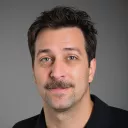Understanding and Applying Different Learning Styles
Understanding and Applying Different Learning Styles
In the ever-evolving landscape of education and personal development, the concept of learning styles has gained significant traction. The recognition that individuals have distinct preferences and strengths when it comes to acquiring and processing information has revolutionized the way we approach learning. In this comprehensive guide, we will delve into the different learning styles, explore how to identify your own learning preferences, and discuss strategies for effectively applying these principles to enhance your learning experiences.
Understanding the Concept of Learning Styles
The theory of learning styles suggests that each person has a unique way of perceiving, processing, and retaining information. These individual preferences can be broadly categorized into several distinct learning styles, each with its own unique characteristics and strengths. By understanding your predominant learning style, you can unlock the keys to more effective and efficient learning, ultimately leading to greater academic and personal success.
The Primary Learning Styles
The most widely recognized learning styles include:
Visual Learners
Visual learners thrive on the use of visual aids, such as diagrams, charts, images, and videos. They tend to have a strong spatial awareness and excel at tasks that involve visual processing and representation.
Auditory Learners
Auditory learners prefer to learn through listening and verbal explanations. They often excel at tasks that involve oral communication, such as lectures, discussions, and audio recordings.
Kinesthetic Learners
Kinesthetic learners are hands-on and experiential in their approach to learning. They learn best through physical interaction, such as role-playing, experiments, and hands-on activities.
Reading/Writing Learners
Reading/writing learners thrive on the written word, preferring to learn through reading, writing, and text-based resources. They excel at tasks that involve the processing and production of written information.
Multimodal Learners
Some individuals may exhibit a combination of these learning styles, known as multimodal learners. These individuals can effectively engage with and process information presented in various formats, making them adaptable and versatile in their learning approach.
Identifying Your Dominant Learning Style
Determining your predominant learning style can be a valuable exercise in self-discovery and personal growth. There are several ways to identify your learning preferences:
Self-Assessment Questionnaires
Many online resources and educational institutions offer self-assessment questionnaires that can help you identify your primary learning style. These questionnaires typically present a series of questions or scenarios, and you can then determine your learning style based on your responses.
Observation and Reflection
Reflecting on your past learning experiences and observing your own behaviors and preferences can also provide valuable insights into your dominant learning style. Consider the activities, resources, and environments that have helped you learn most effectively in the past.
Seeking Feedback from Others
Reaching out to teachers, mentors, or even close friends and family members can offer a unique perspective on your learning preferences. They may have observed patterns or tendencies that you have overlooked or may have insights that can help you better understand your learning style.
Applying Learning Styles to Enhance Your Learning Experiences
Once you have identified your primary learning style, the next step is to leverage this knowledge to optimize your learning experiences. Here are some strategies for applying different learning styles:
Visual Learners
Visual learners can benefit from the use of visual aids, such as diagrams, charts, graphs, and videos. They may also find success in taking detailed notes, creating mind maps, or using color-coding to organize information. Engaging in activities that involve visualization, such as creating presentations or infographics, can also be highly effective for visual learners.
Auditory Learners
Auditory learners thrive in environments that encourage verbal interactions, such as participating in discussions, listening to lectures, or engaging in audio-based learning resources. They may find it helpful to record lectures or conversations and review them later, or to read aloud to themselves when studying.
Kinesthetic Learners
Kinesthetic learners benefit from hands-on experiences, such as role-playing, experiments, or physical demonstrations. They may find it helpful to take frequent breaks for physical activity or to engage in learning activities that involve movement, such as building models or creating tangible representations of the material.
Reading/Writing Learners
Reading/writing learners excel in environments that prioritize written information, such as textbooks, articles, or online resources. They may find it helpful to take detailed notes, create outlines, or engage in writing exercises to solidify their understanding of the material.
Multimodal Learners
Multimodal learners can benefit from a diverse range of learning experiences that incorporate multiple modalities. They may find it helpful to engage with a combination of visual, auditory, and kinesthetic resources, such as watching instructional videos, participating in discussions, and completing hands-on activities.
Adapting Learning Strategies for Specific Contexts
While understanding your dominant learning style is essential, it's important to recognize that learning is not a one-size-fits-all proposition. Depending on the subject matter, the learning environment, or the specific task at hand, you may need to adapt your learning strategies to optimize your performance.
For example, when learning a new language, a visual learner may find it helpful to use flashcards, diagrams, and images to associate words with their meanings, while an auditory learner may benefit more from listening to audio recordings or engaging in conversational practice. Similarly, when studying a technical subject, a kinesthetic learner may excel at hands-on experiments or simulations, while a reading/writing learner may thrive on textbooks, research papers, and written assignments.
By being adaptable and willing to experiment with different learning approaches, you can maximize your learning potential and overcome challenges that may arise in various educational or professional contexts.
Incorporating Mindfulness and Individualized Learning
In addition to understanding and applying different learning styles, incorporating mindfulness techniques and embracing individualized learning approaches can further enhance your learning experiences.
Mindfulness in Learning
Mindfulness, the practice of being present and attentive in the moment, can have a profound impact on the learning process. By cultivating mindfulness, you can improve your focus, reduce distractions, and better retain information. Mindfulness exercises, such as meditation or deep breathing, can help you to be more engaged and absorbed in the learning material, leading to more meaningful and lasting understanding.
Individualized Learning
Embracing individualized learning approaches is key to maximizing your learning potential. This involves tailoring your learning strategies to your unique needs, strengths, and preferences. It may include seeking out personalized tutoring, utilizing adaptive learning technologies, or collaborating with educators to create a customized learning plan.
By incorporating mindfulness and embracing individualized learning, you can create a synergistic effect, where your understanding of learning styles is complemented by a deeper awareness of your own cognitive processes and a more personalized approach to learning.
Conclusion: Empowering Your Learning Journey
Understanding and applying different learning styles is a powerful tool for unlocking your full learning potential. By identifying your predominant learning preferences, you can develop tailored strategies that enable you to learn more effectively, retain information more efficiently, and ultimately achieve greater academic and personal success.
Remember, learning is a lifelong journey, and the ability to adapt and experiment with various learning approaches is key to your continued growth and development. Embrace the diversity of learning styles, incorporate mindfulness practices, and personalize your learning experiences to embark on a transformative and empowering learning journey.
In this comprehensive guide, we have explored the fascinating world of learning styles, providing you with the knowledge and strategies to enhance your learning experiences. By understanding the different learning modalities and identifying your own preferences, you can unlock the keys to more effective and efficient learning.
As you navigate your educational or personal development path, remember to remain adaptable and open to experimenting with various learning approaches. The ability to tailor your learning strategies to the specific context and task at hand is a valuable skill that will serve you well throughout your life.
Embrace the power of mindfulness and individualized learning to create a synergistic effect, where your understanding of learning styles is complemented by a deeper awareness of your cognitive processes and a more personalized approach to learning.
Embark on this transformative journey with a spirit of curiosity, self-discovery, and a commitment to continuous growth. By leveraging the insights and strategies presented in this guide, you will be well on your way to unlocking your full learning potential and achieving remarkable personal and academic success.
Remember, the key to effective learning lies in understanding and embracing the diversity of learning styles. Whether you are a visual, auditory, kinesthetic, reading/writing, or multimodal learner, the strategies outlined in this guide will empower you to optimize your learning experiences and unlock your full potential.
Embrace the journey of self-discovery, experiment with different learning approaches, and most importantly, be patient and kind to yourself throughout the process. Learning is a lifelong adventure, and the ability to adapt and evolve your learning strategies is a hallmark of the most successful and fulfilled individuals.
So, embark on this transformative journey with a spirit of curiosity, a willingness to explore, and a deep commitment to your personal growth. The rewards of understanding and applying different learning styles will be immeasurable, propelling you towards a future of increased knowledge, enhanced skills, and a profound sense of fulfillment.
Joey Walters, an aspiring writer and avid learner, has always been fascinated by the intricacies of how individuals acquire and process information. Through extensive research and personal exploration, Joey has developed a deep understanding of the different learning styles and their practical applications. With a passion for empowering others to unlock their full learning potential, Joey has dedicated their time to sharing these insights and strategies, hoping to inspire a transformative journey of self-discovery and educational excellence.






